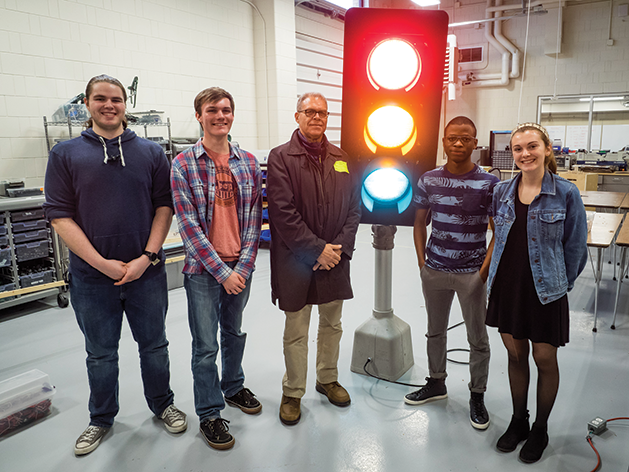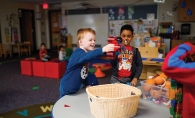
Modern traffic lights have LED bulbs that use less energy and can last up to a decade. But there’s one problem in a cold state such as Minn.: They don’t produce enough heat.
“During the first snowstorm they were having issues with stoplights. There was a buildup of snow,” Tim Berndt, former Edina High School engineering design and development (EDD) teacher, says.
The EDD class is part of Project Lead the Way, which aims to give real-world science and engineering experience to students. Berndt and students Alex Artola, Precious Ayelomi, Mia Coma and Ethan Kopiecki reached out to MnDot.
“MnDot was really intrigued by it,” Artola says, adding MnDot gave them a traffic light for experiments.
“They said they’ve been doing a lot of research as well but haven’t found a permanent solution,” Artola says. “They gave us a lot of information they had from seminars and meetings they attended.”
Through trial and error and donations of items from Walser Toyota, Watlow and Minco, the students came up with a prototype using transparent and flat heating elements that stick to the inside of the traffic light’s lenses.
“They stay on all the time so the snow doesn’t have a chance to accumulate on the lens,” Kopiecki explains. “It keeps the lens above freezing.”
But there are still some loose ends. “Most adhesives will soak up moisture in the air which will make it bubble up and unstick from the plastic,” Artola says. Nevertheless, the students developed a prototype that they presented to MnDot.
Despite not solving the issue with a foolproof solution, the students are happy with their experience.
“It let me dip my toes into the professional world of engineering. I got some real experience,” Artola says.









